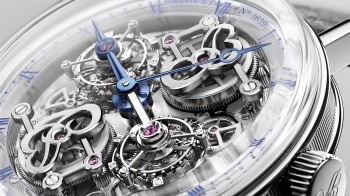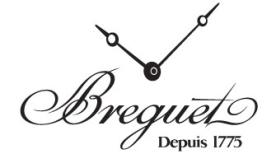Born in Neuchâtel, Switzerland, in 1747, Abraham-Louis Breguet left home in 1762 to perfect his training as a watchmaker in Versailles and Paris. At the age of just 15, his predisposition for the profession would soon allow him to meet some of the greatest watchmakers of the time. In 1775, the young watchmaker settled at Ile de la Cité in Paris. The district was then a center of craftsmanship, bustling with dial-makers, goldsmiths, and manufacturers of hands and cases plying their trades. He found an impressive house in the vicinity, facing out from Quai de l’Horloge on one side and Place Dauphine on the other. It was to become his lifelong home.
It was between these walls that the young prodigy would bring to life some of the most important inventions of watchmaking: gong springs for repeating watches in 1783; the pare- chute shock protector in 1790; the Breguet balance spring in 1795; and – above all – the tourbillon, patented in 1801. It was here in the “House on the Quai” that Abraham-Louis Breguet introduced guilloché work to watchmaking for the first time in 1786 – a technique that would prove integral to the signature Breguet style, which is also characterized by the famous open-tipped Breguet hands.
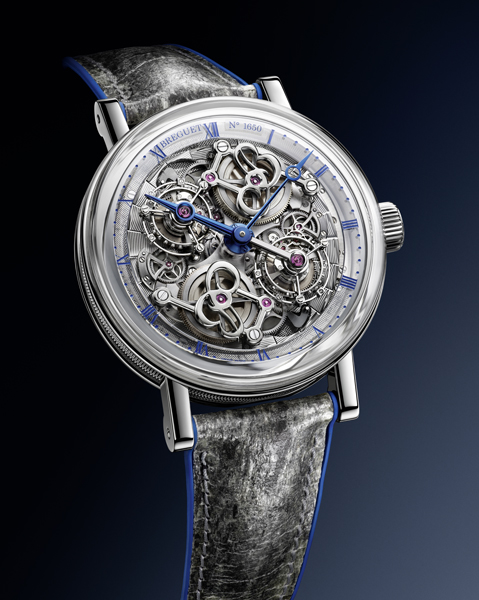
The new Classique Double Tourbillon Quai de l’Horloge model houses a monumental movement in the proportions of a watch. Working with very limited space, the Breguet Manufacture has built a complex and harmonious universe that seemingly defies the laws of physics. Like a delicately chased sculpture, the entire exposed mechanism pivots around its axis at the rate of one full turn every 12 hours. It is propelled by two independent tourbillons, which each complete a full rotation per minute. In this way, the interconnected regulating organs perform a double revolution, simultaneously driving the tourbillon bar: the signature hours hand. It is a remarkable display, featuring a number of components made of gold, as were those of grand complication movements back in their day – a tradition that has now been all but lost; one that the House of Breguet endeavors to perpetuate, as it does its specialist artisan techniques. This watch is a stunning display of Breguet’s expert craftsmanship – in particular the engraving on the back, which depicts the house that Abraham-Louis Breguet acquired on Quai de l’Horloge in Paris.
Mechanical Ingenuity
The timekeeping parts of this Double Tourbillon 5345 are, incidentally, very similar technically to the original creation of Abraham-Louis Breguet. The steel balance springs are endowed with the characteristic terminal curve, allowing for concentric development of the spring. It was a solution devised by the founder himself, which has since become known as the Breguet overcoil. Even now, the balance spring is still shaped by hand, while the different calibrations are also done manually, such as balancing the tourbillon cages. These carriages are the only ones in the current collection that feature a framework in black-polished steel – the highest degree of finishing in fine horology.
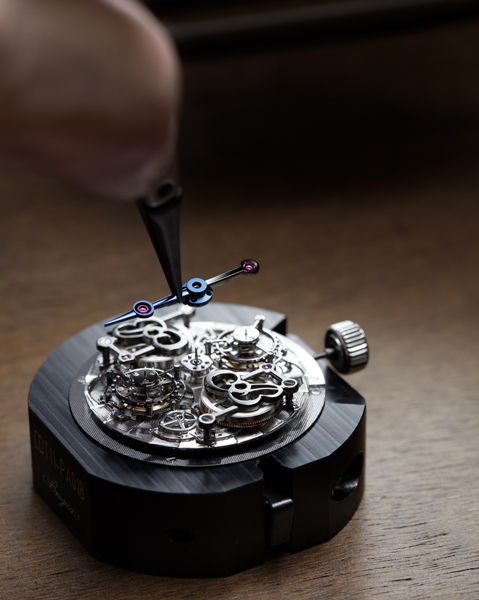
The two mechanical hearts beat independently from one another, each driven by their own barrel. However, the two oscillating organs are coupled with a second pair of wheels, revolving in the central differential. This double-entry mechanism is able to determine the average rate of the tourbillons, allowing for the oscillating plate to be set in motion at the rate of one full rotation every 12 hours. As for the minutes indication, it is a classic hand in the center. The entire mechanism is equipped with a system to minimize play in the wheels, ensuring a perfectly precise display.
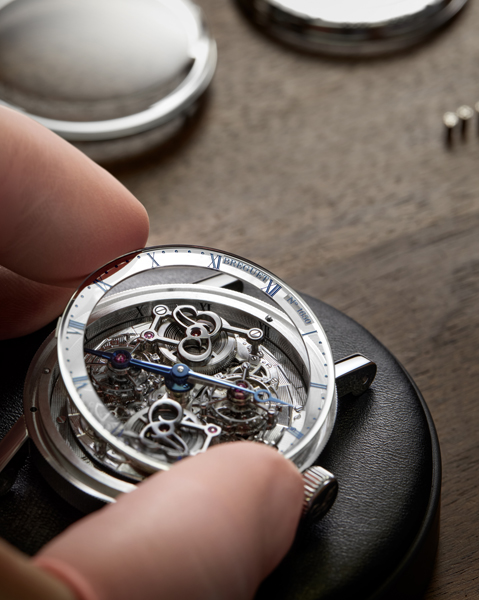
This spectacular staging makes this caliber one of the most complex systems ever developed by the Breguet Manufacture. Its mobile nature, for example, forced the engineers to entirely review the manual winding mechanism, which now relies on independent wheel trains. One of the two barrels is equipped with a friction bridle, similar to those used on self-winding watches. This astute construction allows the spring to disengage once coiled, until the second barrel is fully wound. Lastly, the crown employs a dynamometric security system, which prevents excessive winding of the springs.
Artistic Craftsmanship
The expertise of the art of watchmaking is never without aesthetic virtuosity at Breguet. Presented for the first time in 2006, the Double Tourbillon is now liberated from the dial, revealing itself in all of its mechanical beauty. Stylised and rounded, the barrel bridges in steel take on the form of the letter B. All the components are meticulously straight-grained, chamfered, and even satin-brushed by hand. A true signature of the House, the hand- engraving on a rose engine (guilloché work) finds a new field of expression on the movement, replacing the traditional circular graining. Laid bare as it is, the caliber exposes the inner flank of the caseband, from which the hand-engraved Roman numerals stand out echoing in their design those of the sapphire hours chapter.
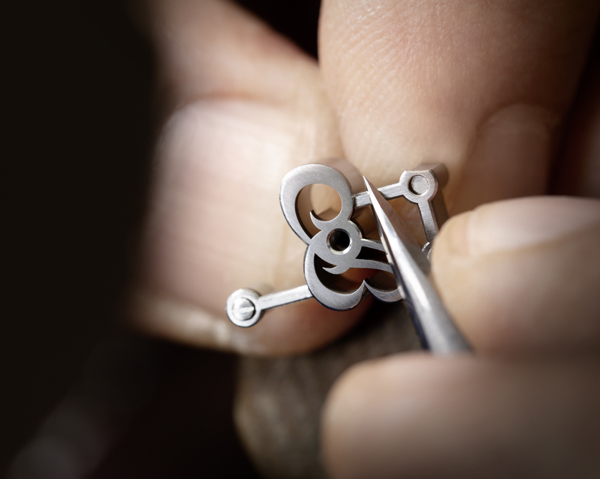
Yet the unique character of this timepiece is fully revealed on its back. The treasures of mechanical ingenuity assembled for the movement leave in their wake timeless poetry. The timepiece is completed with an engraving, crafted by the artisans of the Manufacture, featuring the facade of the building occupied by Abraham-Louis Breguet from 1775 onward, at 39 Quai de l’Horloge, Paris. Etched into gold, the work abounds in such meticulous detail that through the windowpanes a glimpse may be caught of the wheels of the caliber. A window into two worlds of true excellence.

